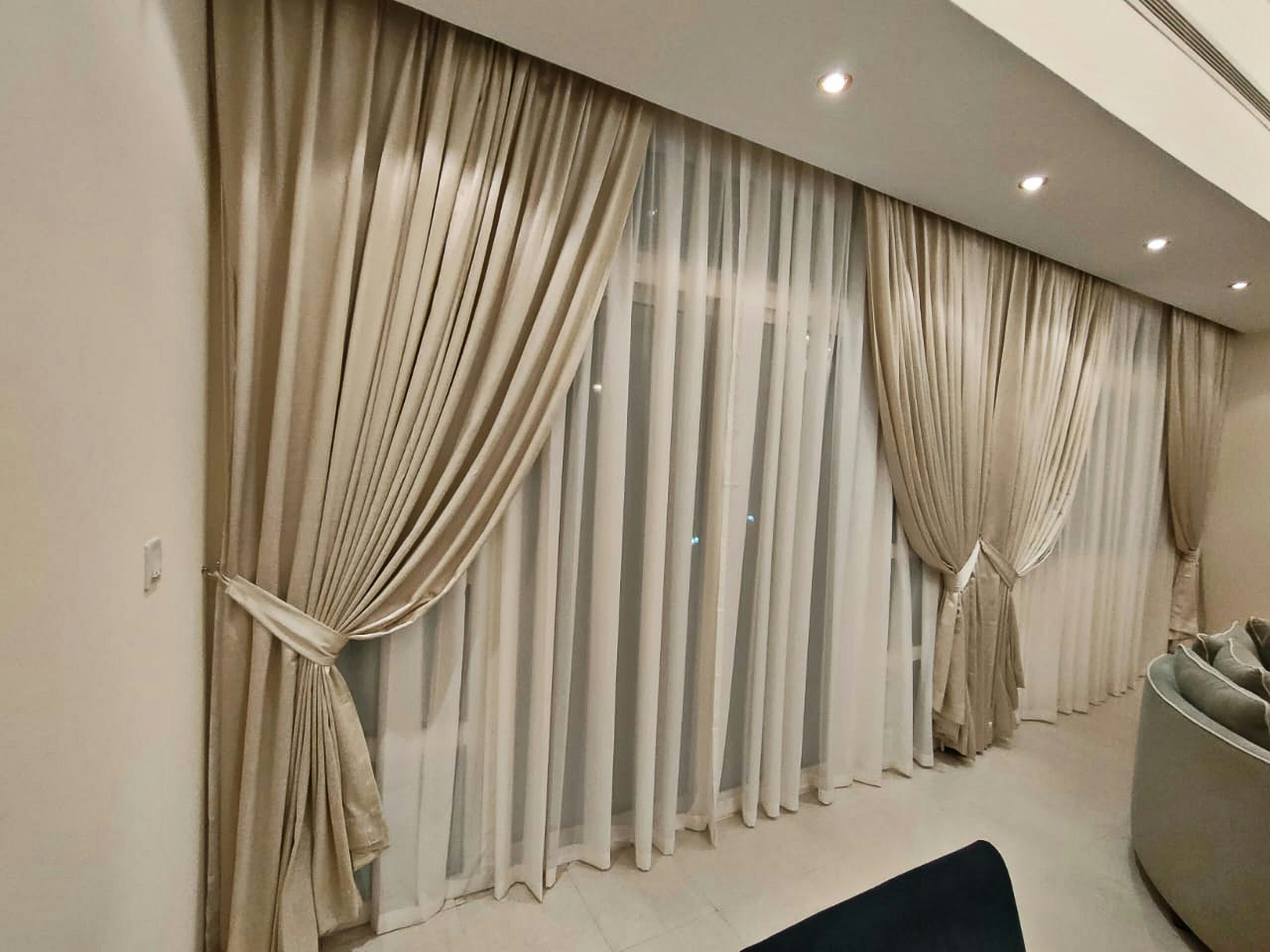Choosing the Best Acoustic Curtain Linings for Public Spaces
Public buildings require effective acoustic control to minimize noise and create a comfortable environment for everyone. Curtain linings made from heavyweight, multi-layered acoustic fabrics and dense materials such as wool and specialized sound-absorbing textiles are the most effective options for reducing noise in these spaces. These linings help absorb sound wave vibrations, limit echo, and reduce the transmission of noise between rooms. When selecting curtain linings for public buildings, it is important to balance both performance and aesthetics, and knowing where to shop for curtain lining fabrics can help you find the right materials to meet both acoustic and visual needs. Also, selecting high-quality, durable fabrics will ensure long-term performance and maintenance of a quiet, comfortable space.
Key Takeaways
- The best acoustic curtain linings use dense, multi-layered materials.
- Effective linings improve noise reduction and comfort in public spaces.
- Matching performance with design needs is essential for optimal results.
Key Curtain Lining Types for Acoustic Control
Effective acoustic curtains for public buildings rely on selecting specific curtain linings that address sound absorption, sound blocking, and overall noise reduction. The choice of material and construction method is critical for achieving the desired acoustic treatment while maintaining other functions such as privacy or thermal insulation.
Acoustic Interlining and Multi-Layered Designs
Acoustic interlinings are dense, fibrous layers positioned between curtain fabrics to improve sound absorption and block external noise. Multi-layered designs typically use combinations of blackout curtains and specialized barriers to reduce both airborne sound and echoes.
Layering approaches often feature a core of acoustic interlining (such as felt or polyester) flanked by face and lining fabrics. This structure not only dampens sound transmission but also increases the thermal insulation of window coverings. Multi-layered drapes are most effective in locations where traffic noise, voices, and ambient sounds must be controlled, such as lecture halls or hospital waiting rooms.
Sound Absorbing vs Sound Blocking Linings
Sound absorbing linings are tailored to soak up sound waves, reducing reverberation and echo within a room. Materials like heavy woven cotton or layered polyester help enhance acoustic comfort by softening harsh sounds. Sound blocking linings, by contrast, are constructed to prevent noise from entering or leaving a space. These typically use denser and less porous materials, fundamentally different in their approach from absorptive options.
Both lining types can be combined for a balanced approach—absorbing internal sound while also limiting sound transmission from the outside. This combination is commonly seen in specialized soundproof curtains and acoustical curtains for public environments.
Specialized Materials: Fiberglass, Mass-Loaded Vinyl, and Dense Cotton
Certain materials provide unique advantages in curtain linings for noise reduction and soundproofing. Fiberglass linings resist moisture and maintain shape, making them suitable for public spaces with strict maintenance requirements. Mass-loaded vinyl (MLV) is renowned for its ability to block sound due to its high density and flexibility. MLV is often sewn or laminated into curtain panels to bolster sound blocking without adding excessive bulk.
Dense cotton linings provide sound absorption and thermal insulation in one. When paired with additional layers or used in blackout curtains, cotton enhances the functionality and longevity of window coverings for acoustic treatment.
Optimizing Curtain Linings for Public Building Acoustics
Enhancing acoustic comfort in public buildings requires careful selection and installation of curtain linings. Effective strategies address both interior and external noise sources while maintaining an appropriate balance between function and design.
Installation Techniques for Maximum Sound Control
Proper installation of acoustic curtains is essential for noise reduction and acoustic treatment. Curtains must extend beyond the window frame and overlap the wall to prevent sound leakage. For improved sound absorption, linings should reach from ceiling to floor, creating a continuous surface that minimizes gaps. Double or triple layering of curtain fabrics increases mass and enhances soundproofing. Pairing acoustic curtains with other soundproofing solutions such as acoustic panels or blinds can further optimize acoustic comfort. Secure mounting hardware helps achieve a tight fit, reducing air gaps that often allow sound transmission.
Large pleats or folds in the fabric also contribute to greater absorption of sound waves by increasing the surface area. Combining these techniques effectively addresses various acoustic challenges in public spaces with high foot traffic or frequent external disturbances.
Balancing Acoustic Comfort and Aesthetics
Public buildings often require a blend of visual appeal and functional noise reduction in their window coverings. Selecting curtain linings that combine dense, heavyweight fabrics with attractive colors or textures meets both needs. Heavy woven materials—like velvet or wool—provide strong sound absorption without sacrificing appearance.
Custom acoustic curtains can be tailored to match a building’s architectural style while still delivering effective soundproofing. Integrating neutral backdrop tones or patterned designs helps these curtains blend seamlessly into diverse spaces such as conference rooms, auditoriums, and lobbies. For areas requiring more acoustic treatment, combinations of acoustic curtains and discrete acoustic panels provide both soundproofing and visual flexibility. Decision-makers should consider maintenance, fire ratings, and the impact of light filtration on thermal comfort alongside acoustic performance.
Conclusion
Curtain linings for acoustic control in public buildings should be chosen based on material density, multilayered construction, and overall thickness. Dense fabrics and triple-layer linings consistently deliver effective sound absorption, helping to manage echo and reduce noise levels.
Integrating sound-absorbing curtains with other acoustic treatments, such as wall panels or bass traps, maximizes effectiveness. Selection should always be tailored to the specific requirements and noise challenges of each space. Maintenance, fire resistance, and durability remain important considerations for public environments. Choosing high-quality acoustic linings ensures lasting performance and improved acoustic comfort.












